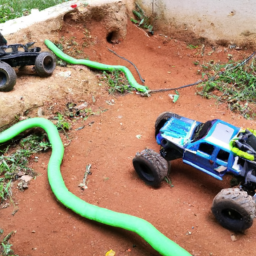Ideas for RC Crawler Backyard Course
Table of Contents []
Rc Crawler Backyard Course Ideas
Introduction
A backyard RC crawler course may seem like a simple idea, but planning out a detailed course with multiple obstacles can actually be quite a challenge. In this article, we will look at 8-12 topics related to setting up a backyard RC crawler course - from researching terrain and obstacles to picking the right RC vehicle. We will cover popular subtopics in each area for a comprehensive understanding of the topic, as well as provide an example of an obstacle or terrain that can be included in the course.
Terrain and Obstacles
The first topic to consider in planning a backyard RC crawler course is the type of terrain and obstacles to include. The terrain should be fairly flat and the obstacles should be easily accessible and manageable. Examples of obstacles that can be incorporated include a rock crawl, a seesaw, a rock ramp or a mud/water pit.
Safety Considerations
Safety considerations are of utmost importance when planning an RC crawler course, and the course should be designed to minimize the risk of injury. Research local parks and recreation rules and regulations, as well as obtaining the proper permits, if needed. Consider avoiding steep inclines, sharp edges, and deep pits. Be sure to use only outdoor-rated RC equipment and never operate the RC vehicle in an area without proper supervision.
Type of Vehicle
When choosing a vehicle for your course, it is important to consider the type of environment you plan to use it in and the difficulty of the terrain. Consider an RC vehicle with off-road suspension such as the Traxxas TRX-4 or Axial SCX-10. These vehicles have adjustable shocks and suspension that will absorb more impact and help the vehicle navigate difficult terrain.
Hopping and Jumping
Hopping and jumping is an advanced RC technique that can be included in your backyard course. It involves lifting and dropping the vehicle from a raised platform or ramp in order to clear an obstacle. This technique requires careful calibration of the vehicle so that when it lands, it will not roll over or potentially cause damage. Be sure to practice this technique on a surface with the same characteristics as the actual terrain.
Driving Strategy
When planning a backyard RC course, it is important to take into account the driving strategy of the driver. RC crawling requires finesse and accuracy, and it is important to consider the types of turns and obstacles that will best suit the driver's skill level. For example, including switchback-style obstacles may be more challenging for an inexperienced driver.
Conclusion
Planning a backyard RC crawler course can be a complex and challenging process, but with proper preparation and research, it can be a fun and rewarding experience. From researching terrain and obstacles to choosing the right type of vehicle and calibrating driving techniques, the process will require dedication and patience. With the right tools and knowledge, however, you can easily build an RC course that suits your needs and challenges your skills.

Previous Page
Next Page
